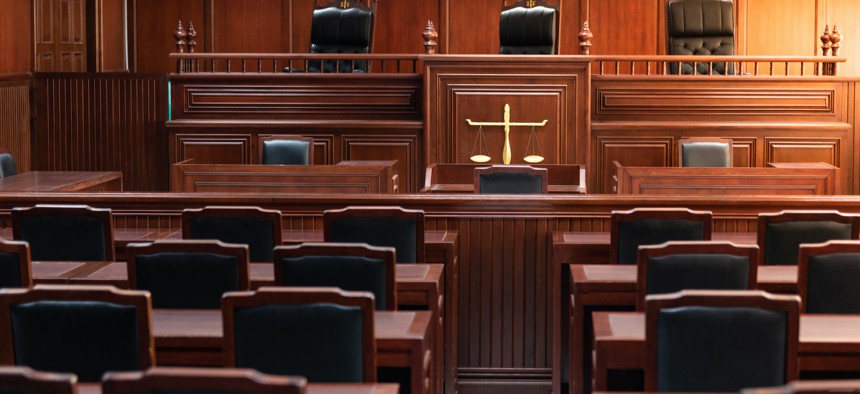All public defenders know that when it comes to misdemeanor criminal court, “the process is the punishment.” This dystopian phrase, based on the title of a 1979 book by law scholar Malcolm Feeley, refers to the phenomenon that sometimes the worst harm of criminal court isn’t the threat of imprisonment – it is the very process of coming back and forth to fight one’s case and the corresponding costs in child care, lost wages and potential lost employment that result.
In Cardozo Law School’s Criminal Defense Clinic, where I supervise third-year law students in the representation of low-income people accused of misdemeanors, my students and I have routinely observed exhausted New Yorkers, waiting patiently in the pews of Manhattan criminal court for their case to be called, sometimes for two, three or even five hours during an especially crowded court calendar.
For a fleeting moment during the COVID-19 pandemic, some of these process costs seemed to disappear, albeit briefly, with the advent of virtual court. This allowed New Yorkers to “appear” in court via smart phone from the safety of their homes. Although virtual court has its drawbacks, it should remain an option until everyone has an opportunity to be vaccinated.
But in a March 1st Monday Message, Chief Judge Janet DiFiore announced the Office of Court Administration’s intention “to resume some in-person operations, including a limited number of jury trials.”
While the message may have been meant for jury trials, the reality, at least for New York County Criminal Court, where my students and I practice, is that at least some judges have once again begun to require in-person appearances by attorneys, clients, and court personnel for the purpose of handling the non-urgent, everyday litigation that arises in the course of minor misdemeanor case. These judges have done so without inquiring whether defendants or their attorneys have had the opportunity to get vaccinated. For example, in one of the clinic’s cases, the client, assigned clinic student and I received an order to appear in person, not so that a jury trial could commence, but solely for the court to issue a decision on a discovery motion. There is simply no reason this decision could not be issued in a virtual court appearance – a routine occurrence since the pandemic had begun. In a particularly cruel twist, the judge’s court attorney actually ended up emailing the decision to the parties the night before the appearance. Yet my client, student and I – not to mention the prosecutor, court staff and judge – all were required to put our health and potentially our lives at risk to meet the court’s directive to appear in person anyway. That’s right: even though we already had the judge’s decision in hand, we all still had to appear the next morning inside the courtroom so our client’s case could be called on the “in person calendar.”
Of course, the harms of these non-essential court appearances fall disproportionately on our clients, who are presumed innocent of the charged crimes. Those most likely to be arrested for misdemeanor crimes are low-income, primarily Black and brown New Yorkers – the very same individuals who are currently having difficulty accessing vaccine appointments and are three times as likely to be hospitalized and twice as likely to die should they contract COVID-19.
And clients who are unwilling to risk contracting COVID-19 through a court appearance have few options. Should they fail to appear in person, the court will likely issue a warrant for their arrest, authorizing the NYPD to seize them without warning and physically jail them in conditions that defy social distancing, until they can be brought before the court.
Virtual court is admittedly far from perfect. A digital interface can be dehumanizing. Older clients may be unfamiliar with the necessary technology, and poorer clients may lack easy access. But for routine court appearances that do not require examination of witnesses, introduction of evidence, or robust oral arguments, virtual court achieves the twin aims of protecting the most vulnerable New Yorkers from unnecessary exposure to the pandemic and reducing the type of economic costs that come with spending a day sitting and waiting inside a courtroom. Perhaps more fundamentally, the pandemic should push us to reconsider whether these “routine court appearances” necessitate a court appearance at all. We would all be better off if the very process of fighting one’s criminal case were a little less punishing.


